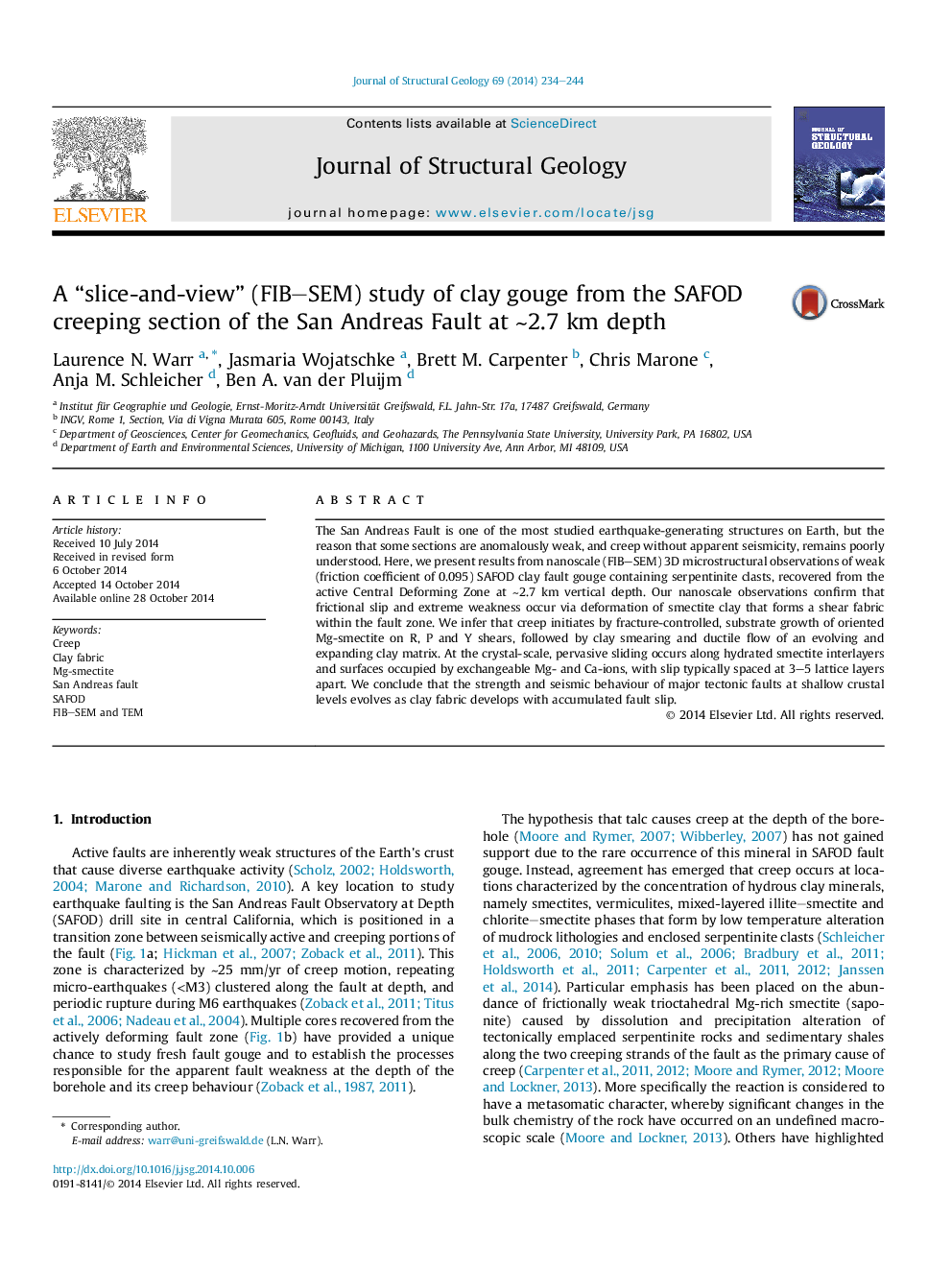| Article ID | Journal | Published Year | Pages | File Type |
|---|---|---|---|---|
| 6444854 | Journal of Structural Geology | 2014 | 11 Pages |
Abstract
The San Andreas Fault is one of the most studied earthquake-generating structures on Earth, but the reason that some sections are anomalously weak, and creep without apparent seismicity, remains poorly understood. Here, we present results from nanoscale (FIB-SEM) 3D microstructural observations of weak (friction coefficient of 0.095) SAFOD clay fault gouge containing serpentinite clasts, recovered from the active Central Deforming Zone at â¼2.7 km vertical depth. Our nanoscale observations confirm that frictional slip and extreme weakness occur via deformation of smectite clay that forms a shear fabric within the fault zone. We infer that creep initiates by fracture-controlled, substrate growth of oriented Mg-smectite on R, P and Y shears, followed by clay smearing and ductile flow of an evolving and expanding clay matrix. At the crystal-scale, pervasive sliding occurs along hydrated smectite interlayers and surfaces occupied by exchangeable Mg- and Ca-ions, with slip typically spaced at 3-5 lattice layers apart. We conclude that the strength and seismic behaviour of major tectonic faults at shallow crustal levels evolves as clay fabric develops with accumulated fault slip.
Related Topics
Physical Sciences and Engineering
Earth and Planetary Sciences
Geology
Authors
Laurence N. Warr, Jasmaria Wojatschke, Brett M. Carpenter, Chris Marone, Anja M. Schleicher, Ben A. van der Pluijm,
